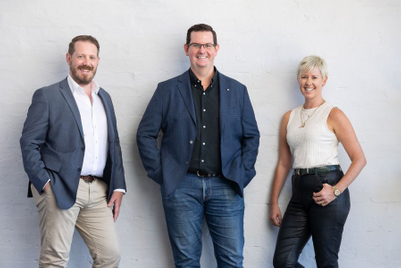
Following brands on social networks is already the new normal for consumers. Marketers have been quick to establish and enhance their brand presence on a number of existing and emerging social platforms to get the maximum amount of exposure for their messages. However, is garnering the largest number of consumer eyeballs possible the best business strategy? What really counts is going beyond short term attention, and extending sustainably to build customer loyalty through social media engagement, with an “always-on” approach.
Marketers looking to make the best use of the social-media landscape to tell their story can increase their chances of success by taking a holistic approach. Specifically, they should activate a ‘follower ecosystem’ in the right context and engage with specific groups of their followers to turn them into loyal brand advocates.
The right context means that marketers should focus their efforts on platforms most suited to a particular audience’s mindset. Take HP as an example: It used precision targeting to attract key IT decision makers to its LinkedIn Company Page. Given their background, these users welcomed product information and technical discussions, allowing HP to have more open product conversations with content that matched the needs of the community. As a result, HP became the first company to attract 1 million followers to a LinkedIn Group.
On a professional network platform, marketers will typically find more influential, affluent and highly educated audiences. These audiences are there for specific professional purposes such as widening their networks, getting professional insights, and more. They differ from the average online consumer in a number of ways, as their online activity is an extension of their professional identity. Firstly, they are online to be productive, efficient and successful, and to receive advice. They also want access to the kind of expertise, insights and recommendations that brands can provide. Professionals are also eager to follow brands and receive updates on topics that are relevant to them as customers. A recent global study by LinkedIn and TNS titled The Mindset Divide revealed that users on professional networks ranked “Updates from Brands” as the #2 type of content they expect, compared to #9 by users on personal networks. Over a period of time, users on professional networks are likely to help spread the marketers’ messages, attracting a larger audience for them.
This trend echoed strongly in the 2012 LinkedIn Followers Report, based on a survey of about 800 members in the Asia-Pacific region. Close to three quarters of Singapore respondents, and almost 90 per cent in India, expect companies to have a presence on LinkedIn. What’s more, more than 60 per cent in Singapore, Hong Kong and India expect to receive industry insights from the companies they follow on LinkedIn.
Online professionals have different expectations of how brands should communicate with them. The survey showed that 74 per cent of Singapore respondents would feel a stronger connection to a company if they could interact with it on LinkedIn. The Mindset Divide study also showed that users of professional networks expect to hear from brands 26 per cent more on professional networks than they do on personal ones. Perhaps more importantly, about 50 per cent of the members in all surveyed countries said they are more likely to buy from a company if it is more engaged with its followers.
Given the fact that members on professional networks not only expect—but indeed, want—to hear from brands. And given the direct link to actual purchase intent (or other intended actions), marketers have a valuable opportunity to connect with specific community members within that group using personalised messages with content that is highly relevant, resulting in direct, long-lasting, and impactful relationships at scale. Recipients can eventually become brand ambassadors who advocate and distribute marketing messages across their networks and remain loyal customers. It is a premium digital word-of-mouth opportunity that is more valuable than just buying reach.
Becoming a part of a professionals’ world online also has added benefits for marketers. They can hear firsthand from their customers about developing trends and gain the ability to quickly optimise their messages as their customers’ interests change over time. When such professionals are engaged, the resulting active sharing within their networks is far more valuable than just clicks.
What marketers should seek online is the opportunity to create direct connections with their audiences in order to build customer loyalty. This is the core of what a follower ecosystem does—extend the brand message and drive more consumer engagement with the brand. Begin by catching the right audience’s attention. For instance, professionals who will have the most affinity for the brand. Then, grow that audience, which benefits the brand’s metrics, and finally, engage with the community overall and with specific members, which will result in richer conversations and more brand advocates.
Olivier Legrand is head of marketing solutions, Asia Pacific and Japan, LinkedIn


.jpg&h=334&w=500&q=100&v=20250320&c=1)
.jpg&h=334&w=500&q=100&v=20250320&c=1)
.jpg&h=334&w=500&q=100&v=20250320&c=1)


.png&h=334&w=500&q=100&v=20250320&c=1)
.png&h=334&w=500&q=100&v=20250320&c=1)



.jpg&h=268&w=401&q=100&v=20250320&c=1)
.png&h=268&w=401&q=100&v=20250320&c=1)

.png&h=268&w=401&q=100&v=20250320&c=1)



.png&h=268&w=401&q=100&v=20250320&c=1)